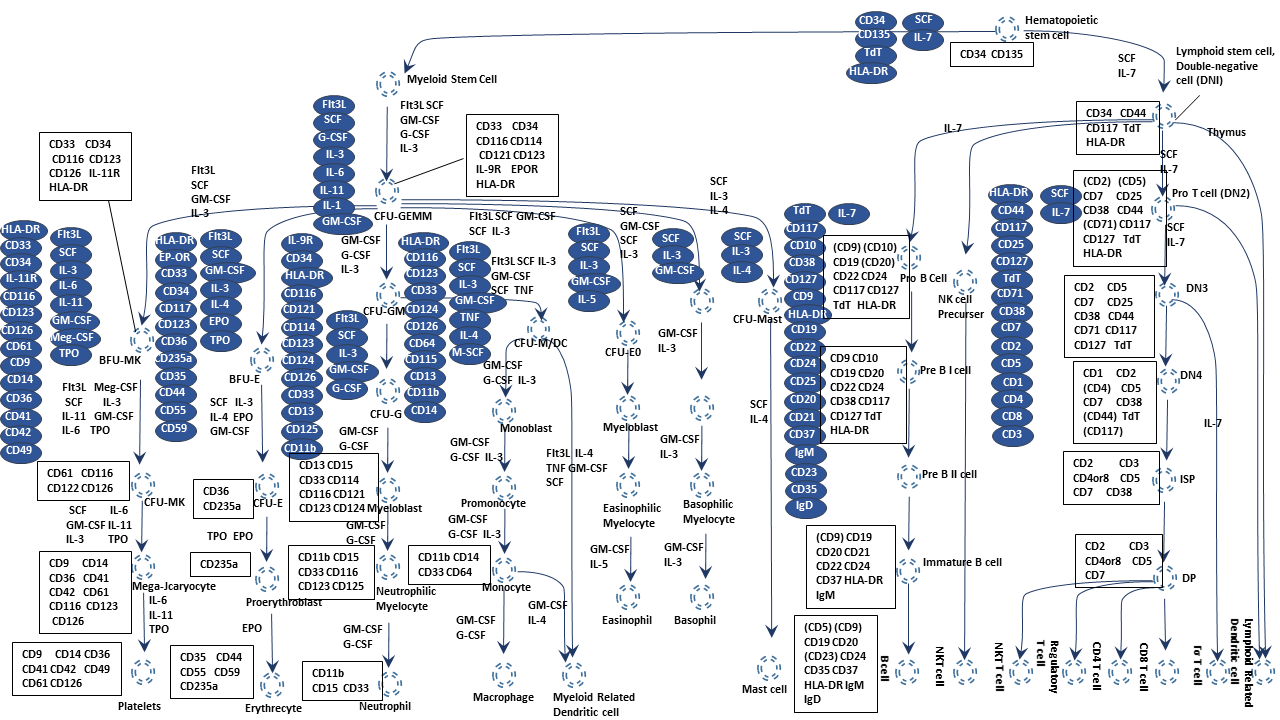
What Is Hematopoietic Cell Lineage?
Hematopoietic cell lineage refers to the developmental history of the hematopoietic stem cells' differentiation into various hematopoietic cells such as platelets, erythrocytes granulocytes, macrophages, T cells, and B cells.
The Function of Hematopoietic Cell Lineage
The studies on hematopoietic cell lineage give us a comprehensive and systematic view of the process of hematopoiesis.
The Instructions of Hematopoietic Cell Lineage
Hematopoietic stem cells (HSCs) are pluripotent and self-renewing progenitor cells. They reside in the bone marrow and can differentiate into all blood cell types during the process of hematopoiesis. Significant evidence has indicated that hematopoietic stem and progenitor cells are not randomly distributed in the bone marrow, but rather are spatially and possibly physically associated with the endosteum and the blood vessels.
The mechanisms controlling HSC self-renewal and differentiation are thought to be regulated by a diverse set of cytokines, chemokines, colony-stimulating factors, and intracellular signaling molecules. HSCs differentiate asymmetrically, so some of their daughter cells still retain multipotency. Common lymphoid progenitor (CLP) cells and common myeloid progenitor (CMP) cells are the multilineage products of HSCs self-renewal or differentiation. Under the stimulation of IL-1, IL-3, IL-6, GM-CSF (Granulocyte Macrophage-colony stimulating factor), and SCF, HSCs divide into common myeloid progenitor cells. Common lymphoid progenitor cells are the products of the HSCs stimulated by IL-2, IL-7, IL-12, SDF-1 (Stromal cell-derived factor-1), TNF-α, and TGF-β 1.
Myeloid progenitor cells are multipotent stem cells produce Granulocyte-Macrophage progenitor cells and Megakaryocyte-Erythroid progenitor cells. When stimulated by GM-CSF, Granulocyte- Macrophage progenitor cells further differentiate into monocytes and myeloblasts that eventually mature into neutrophils, eosinophils, and basophils. And monocytes evolves into macrophages. Megakaryocyte-Erythroid progenitor cells evolve into megakaryocytes and erythrocytes. Megakaryocytes subsequently develop into platelets (or thrombocytes) that are important in blood clotting.
Lymphatic progenitor cells are the birthplace of the immune system of higher animals. Their differentiation and developmental processes are closely related to the stimulation of antigens. They are also pluripotent stem cells and can differentiate into two different types of targeted stem cells: thymus-derived T lymphocytes (or T cells) and bone marrow-dependent B lymphocytes (or B cells). These two immune cells are transformed into protolymphocytes and plasmablasts by restimulation of the corresponding antigens and then respectively mature into lymphocytes and plasma cells.





